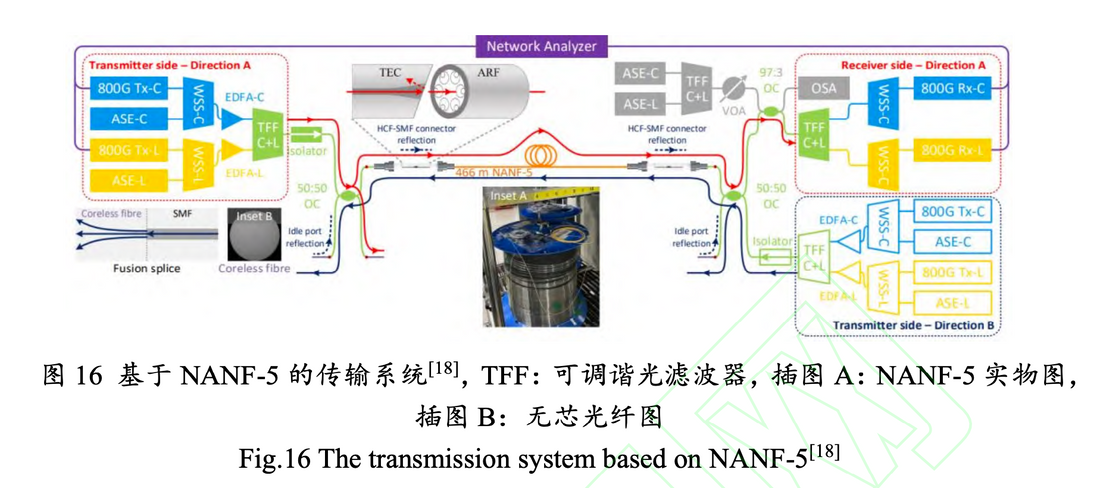
Research Progress in Anti-resonant Hollow-core Fiber Technology
Citation
常彦彪, 沈世奎, 张贺, 王泽林, 王光全, 唐雄燕, 高然, 李志沛, 王斐, 黄帅洛. (2024). 反谐振空芯光纤技术研究进展 [Research Progress in Anti-resonant Hollow-core Fiber Technology]. 光通信研究 [Study on Optical Communications]. Retrieved from https://link.cnki.net/urlid/42.1266.TN.20240918.1450.008
Keywords
- 空芯光纤 / Hollow-core Fiber, HCF
- 反谐振空芯光纤 / Hollow-Core Anti-resonant Fiber, HC-ARF
- 非线性 / Nonlinearity
- 色散 / Dispersion
- 低损耗 / Low loss
- 超低时延 / Ultra-low latency
- 光纤通信 / Optical communication
- 性能表征技术 / Performance characterization technology
- 传输技术 / Transmission technology
-
光缆 / Optical cable
-
S 波段 (S-band
-
C 波段 / C-band
-
L 波段 / L-band
-
单模光纤 / Single-mode fiber, SMF
-
嵌套反谐振无节点光纤 / Nested Anti-resonant Nodeless Fiber, NANF
-
双嵌套反谐振无节点光纤 / Double Nested Anti-resonant Nodeless Fiber, DNANF
Brief
The article summarizes the development history, principles, performance characterization techniques, and transmission technology advancements of anti-resonant hollow-core fiber (HC-ARF), highlighting its potential to overcome the limitations of traditional single-mode fiber for next-generation optical communication systems due to its superior properties like low loss, nonlinearity, dispersion, and latency.
Summary
This article reviews the advancements in anti-resonant hollow-core fiber (HC-ARF) technology, highlighting its potential as a replacement for traditional single-mode fiber in future optical communication systems due to its low loss, ultra-low nonlinearity, ultra-low dispersion, and ultra-low latency. The paper discusses the evolution of HCF structures aimed at reducing transmission loss, the principles of light guidance in HC-ARF, and recent progress in performance characterization techniques for nonlinearity, structural analysis, and backscattering. Furthermore, it summarizes significant achievements in transmission experiments using HC-ARF, showcasing increasing transmission capacities and distances over various wavelength bands in both lab and field trials. The article concludes by emphasizing the potential of HC-ARF for overcoming the limitations of conventional fibers and its importance for future high-capacity, low-latency optical networks, especially in the context of initiatives like "Eastern Data and Western Computing" in China.
Origin:
